Into the intersection of identity & violence
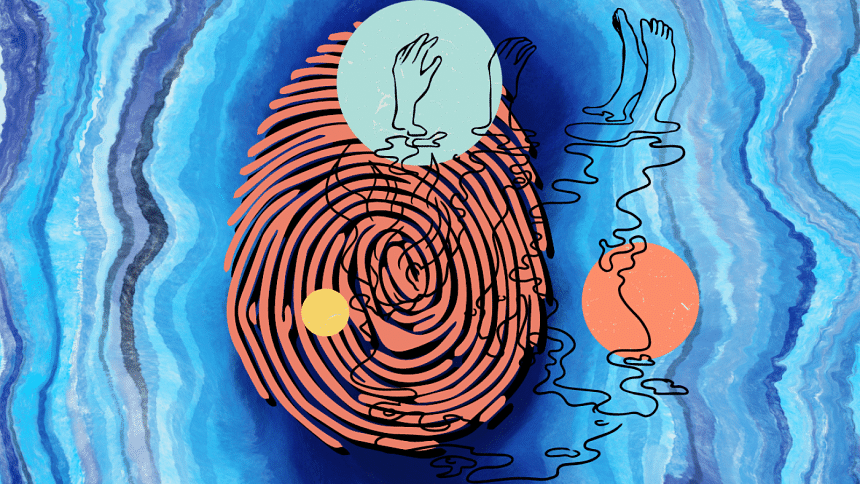
The EDRU Study Group, comprising a team of young researchers, has recently published a unique research journal on the topic of identity and violence. What sets this journal apart is its collaborative nature, involving current students and alumni, under the guidance of professors Abdullah Al-Mamun and Maswod Akhter. The initiative aims to foster the research capabilities of the present students of the English department of Rajshahi University by providing mentorship from experienced teachers and alumni.
For the alumni pursuing teaching careers, this group serves as an ideal platform to enhance their research skills and contribute to the country's scholarly literature. Notably, the researchers have mostly chosen indigenous Bangla literature as their subject of study, despite graduating in English literature. However, the medium of study remains English, offering an opportunity to raise awareness and interest in Bangla and South Asian literature among the English-speaking community.
The publication itself is a special issue of Praxis, the journal of the Department of English at Rajshahi University, focusing on the theme of Identity and Violence. The journal explores the intricate relationship between identity and violence through multidisciplinary perspectives, encompassing fields such as psychology, sociology, anthropology, and politics.
The group is currently running another research project on Partition (1947 & 1971), and the researchers have selected their topics and submitted them to the editors, who are scrutinizing them right now.
The journal issue begins by providing an overview of the concept of identity, discussing how it is shaped by a variety of factors, including race, ethnicity, gender, class, religion, and sexual orientation. The authors then discuss how identity can be a source of both conflict and violence. They argue that when identity is threatened or challenged, it can lead to anger, resentment, and fear, which can lead to violence.'
Professor Abdullah Al Mamun begins his note on violence in this way: "In classical/traditional epistemological and ontological discourses, violence is usually placed in opposition to reason. Violence and reason are considered as mutually exclusive and violence is perceived as antagonistic to truth, language, and logos."
But Abdullah Al Mamun repudiates the binary of reason and violence saying that it is not (and never was) as smooth as it seems to be. The way he sets the framework of the research initiative is that violence has to be understood in a given spatiotemporal matrix or analyzed and categorized by understanding its specific aspects in a historical context. More specifically, he charts out some associations-nation and violence, race and violence, gender and violence, religion and violence, class, and violence, etc.-under the umbrella of which, the young researchers have carried out their exploration of identity and violence, and to do so, they deployed different theoretical frameworks.
Of them, Walter Benjamin has been widely referred to by researchers to make their points on violence and identity. According to Benjamin, "All violence as a means is either lawmaking or law preserving". However, law-making violence can also be seen as somewhat identical with the concept of Mythic violence as it bears the ambiguity of myth which ultimately leaves this kind of violence to be burdened with "fate".
Some of the key findings of the journal articles are thus: Identity is a complex and multifaceted concept that is shaped by a variety of factors, including race, ethnicity, gender, class, religion, and sexual orientation. Identity can be a source of both conflict and violence. When identity is threatened or challenged, it can lead to anger, resentment, and fear, which can lead to violence. Violence is often used as a way to maintain or challenge social hierarchies, and it can be used to oppress or marginalize marginalized groups. It is, therefore, essential to understand the complex relationship between identity and violence to develop effective interventions to prevent violence and promote peace.
Umme Kulsum Prosun, in her article "Tracing the Roots of Violence: A Psychoanalytic Study of Syed Waliullah's Tree without Roots, sheds light on the way Majeed, one of the most famous characters in the realm of the Bangla novel (Lal Salu) uses violence to serve his purposes. She says, Majeed at the beginning of the novel commits a violent act just after entering Mahabbatpur as he fraudulently claims an unknown grave to be a holy shrine and becomes its self-proclaimed caretaker. This very act is a form of law-making violence as he uses the name of God wrongly to instill fear in people to control them.
Mohammad Saeid Hassan Khan, in his article titled "The Becoming of Manasa: Violence as a Means of Establishing Desired Identity in Manasamangal Kavyas", reflects on the violent approaches carried out by Manasa in formatting her desired identity and explained the correlation between identity and violence in Manasamangal Kavyas.
As her father Shiva was unaware of her identity, Manasa, a kind of outcast, resorted to violence to establish her identity.
"As the law of the society was not ready to give her due recognition and Manasa had to act to set the law anew, her actions were bound to be violent to fight the existing law", Saeid writes, "In the divine realm, the main obstacle for Manasa to attain her identity was Chandi, because Manasa wanted to secure her place as a legitimate daughter in Shiva's abode, but Shiva's wife Chandi was not willing to acknowledge her. Shiva's first wife Chandi is the lawmaker in Shiva's household. So, Manasa had to struggle against Chandi's 'law-preserving violence' to secure a place there in Kailasa. There Manasa had to carry out 'mythic violence' as a demonstration of her power."
Apart from literary criticism, this issue of Praxis also features one ethnographic article on the Mijos and another critical article on the plight of the Rohingyas. In the southern region, right on the border of Bangladesh, two ethnic groups have endured persecution at the hands of their respective state authorities. The continuous mistreatment and discrimination faced by these communities have created a challenging environment for their survival and well-being.
Bokhtiar Ahmed, a professor from the Department of Anthropology, University of Rajshahi, renders an ethnographic portrayal of the disjointed existence of the Pangkhuas who live along the Bangladesh-India border, while historically disarticulated from their self-recognition as the Zo people. They form one of the smaller groups among the indigenous Jumma people of the Chittagong Hill Tracts (CHT) who struggle to survive as 'Bangladeshi', 'Jumma' or 'Pangkhua' in this geopolitical margin of the Bangladeshi state.
This is a portrayal of how an indigenous community lost their historical selves at the crossroads of two state-making projects. But the hegemony of the state projects is so strong that, as Bakhtiar observes, "surprisingly it hardly bothers my Pangkhua friends who are quite happy to introduce themselves as 'Pangkhua' and never forget to write it as a surname in documents.They or their cross-bordered relatives from Mizoram also seem to have no trouble with how Mizoram is graphed in statistical figures. All they know is that they were part of a 'Zo' people who have been living in this mountainous terrain from time immemorial. The historical emergence of the state has divided themselves and soil." So, state violence caused them to forget their identities to a certain extent.
Reference to celebrity historian Yuval Noah Harari is relevant here. Harari asserts in Sapiens: A Brief History of Humankind that violence has been a significant force throughout human history, playing a crucial role in the rise and fall of civilizations. He explores how both individuals and groups have utilized violence to establish dominance, conquer territories, and assert power over others. From ancient conflicts to modern warfare, Harari delves into the various forms of violence that have shaped human civilization.
Harari also explores the connection between violence and human nature. While acknowledging that humans have the capacity for aggression and violence, he argues that violence is not an inherent or unchangeable aspect of our species. Instead, he suggests that it is shaped by social, cultural, and environmental factors. By understanding these factors and actively working to address them, societies can strive to create conditions that reduce violence and promote harmony.
Rakibul Alam, another researcher from the group, in his article titled "Violence and Its Ramifications: Exploring Theory" sheds light on some fundamental aspects of human nature and violence: We are most likely living in one of the most violent eras in human history, he writes, in which violence, tragically, has become the only 'toxic glue' that holds mankind together. As a result, in today's socio-political environment, we are practically compelled to see violence as a necessary condition of modern reality, even if not the "original sin of politics" itself.
The essay emphasizes the instrumentalization of "the other" in acts of violence and the role of violence in shaping social and political structures. It argues that violence serves as a means of closure, normalizing existing systems and suppressing alternative possibilities.
One strength of the essay is its recognition of violence as a metaphysical category, encompassing both ideology and material manifestations. The analysis of violence as a state of mind (keeping in line with Henner Hess) that perpetuates hierarchies and subjugation is insightful. It acknowledges the complex dynamics of violence and identity formation, emphasizing the role of language and discourse in shaping individual and collective identities.
The researchers in this volume have engaged with a variety of texts, including Joseph Conrad's works such as The Secret Agent and Under the Western Eyes, Tarashankar Bondopaddhay's Kobi, the works of Kazi Nazrul Islam, Jibanananda Das, Rudra Muhammad Shahidullah, as well as selected poems by William Blake. Additionally, the volume features articles on An Introduction by Kamala Das, Memoirs of Abul Mansur Ahmad, and The Dark Holds No Terror by Sahahi Deshpande, among others.
It is worth considering that, according to historian Yuval Noah Harari, we may not be able to fully evade violence, as our evolutionary past has instilled certain inclinations within us that could be linked to violence.
Why identity, and why it matters
Roots, a novel by Alex Haley, explores the theme of identity. The story follows the life of Kunta Kinte, an African man captured and sold into slavery in America, and his descendants.
One of the central themes in the novel is the search for identity. Kunta Kinte, as a young man from the Mandinka tribe in Africa, has a strong sense of his cultural heritage and personal identity. However, upon being enslaved and transported to America, he is stripped of his name, language, and traditions, and is forced to adopt a new identity as Toby.
Throughout the book, Kunta Kinte's struggle to maintain his sense of self and reclaim his African roots becomes a powerful narrative. He tries to pass on his heritage and traditions to his daughter, Kizzy, and subsequent generations, fostering a sense of connection to their African ancestry despite the oppressive circumstances of slavery.
Amartya Sen, the Nobel laureate in economics and a philosopher, said the perception of identity has done much to generate and sustain demand for justice and fairness. For example, the movements for women's rights have drawn heavily on the sense of feminine identity. He even goes on to say that the world would have been a much-impoverished place without the social and political commitment of being directly inspired by the identity of disadvantaged people.
Sen further argues that a sense of identity can be a source not merely of pride and joy, which it certainly is, but also a source of confidence and strength, and yet it can also kill with abandon. So identity can be a powerful force for good, but it can also be used to justify violence.
He identifies two main ways in which identity can be used to justify violence. The first is through the idea of "us versus them." This is the idea that there is a fundamental conflict between our group and another group. This conflict can be based on religion, ethnicity, nationality, or other shared characteristics. When we see the world in terms of "us versus them," it is easy to dehumanize the other group and to see them as a threat. This can lead to violence, as we try to protect ourselves from the perceived threat.
Amartya Sen emphasizes the need to critically examine the historical reality that all wars, or struggles for power, fundamentally arise within the context of contesting identities. This becomes particularly relevant in our era of rapid globalization, where different cultures are increasingly coming into contact with and influencing one another. Throughout history, conflicts have consistently been sparked by perceptions of self and others.
The Rohingyas are perhaps the most extreme examples of how identity can be used to justify violence. The Rohingyas, dubbed by the Buddhist majority Burmese people of Myanmar as an 'outsider', have been subjected to ethnic violence for a long time, which had culminated in the most extreme form in the last decade and even went to the extent of evicting them of their homesteads where they stayed for more than a millennium.
Maswood Akhter, the co-editor of the volume, renders a picture depicting the misery of the lives of the stateless Rohingyas, who have been pushed to the Bangladesh territory by the Myanmar army. The essay presents a critical evaluation of the Rohingya tragedy, describing it as a major humanitarian crisis that resulted from a systematic plan of persecution and exclusion by fascist, fanatic, and racist regimes in Myanmar. The author highlights the acts of genocide, ethnic cleansing, and other brutalities committed against the Rohingya people, leading to a massive refugee crisis with nearly one million Rohingyas in refugee camps in Bangladesh.
The author argues that the international community has largely ignored the warning signs and failed to take effective action to prevent the atrocities. They criticize the weak and inconsistent pressure exerted by powerful nations, which prioritizes trade and economic interests over human rights. The essay also raises concerns about the complicity of Aung San Suu Kyi, the Nobel Peace laureate and leader of Myanmar's democratic government, who is accused of subscribing to anti-Muslim prejudice and failing to address the suffering of the Rohingya.
Lenin, state, and violence
Rakibul is laudable for his attempt to put violence in a theoretical frame, but what is so conspicuously missing in his article is any reference to Vladimir Lenin and his famous book, State & Revolution, where he sanctified the necessity of violence for securing the class interest of the proletariat.
Lenin advocated for the use of revolutionary violence to establish a dictatorship of the proletariat, a transitional phase in which the working class would seize political power and dismantle the capitalist state. He argued that this dictatorship was necessary to suppress counter-revolutionary forces and protect the gains of the revolution. Lenin emphasized that the violence employed by the proletariat was different from the violence of the capitalist state, as it aimed to liberate the oppressed and create a more just society.
However, it is important to note that Lenin's views on violence were not without controversy. Critics argue that his revolutionary zeal and the subsequent implementation of his ideas in the Soviet Union led to significant human rights abuses and authoritarianism. The use of violence by the state under Lenin's leadership, including the Red Terror and the suppression of political opponents, has been heavily criticized.
The fact remains that throughout history, various political groups have resorted to violence in their pursuit of advancing their causes, often justifying it as necessary for the greater good of humankind. The legacy continues to persist, with the Rohingya community facing persecution under similar pretexts, just like the Kurds in the Middle East, Muslims, and other communities around the world. Hitler's infamous pursuit to annihilate the Jewish people was fueled by his deep-seated hatred for the community, driven by his desire to establish the supremacy of his race and identity. Visiting the concentration camps now where the Jewish were subjected to merciless persecution is an overwhelmingly harrowing experience, as attested by numerous visitors and reviewers to the reviewer.
However, it is worth considering that, according to historian Yuval Noah Harari, we may not be able to fully evade violence, as our evolutionary past has instilled certain inclinations within us that could be linked to violence. Harari recognizes that our ancestors encountered violent obstacles in their fight for survival, and these encounters may have left a lasting impact on certain aspects of our behaviour. In essence, the potential for violence exists within us, and eliminating that potential necessitates an ongoing struggle for humanity, which can be viewed as a form of violence.
Parents sometimes employ certain forms of discipline to assert authority over their children, despite holding a deep affection for them. This serves as evidence that violence permeates various aspects of society. Nevertheless, Harari advises against reducing human nature to a fixed set of violent instincts, emphasizing the significant role played by cultural and social influences in moulding our behaviour.
In conclusion, the research journal on identity and violence published by the EDRU Study Group presents a critical approach to understanding the complex relationship between identity and violence. The young researchers, under the guidance of professors Abdullah Al-Mamun and Maswod Akhter, have delved into multidisciplinary perspectives to explore this theme.
The journal highlights that identity is a multifaceted concept influenced by race, ethnicity, gender, class, religion, and sexual orientation. It emphasizes that identity can be a source of conflict and violence, as individuals and groups may feel threatened or challenged, leading to anger, resentment, and fear that can escalate into violence.
Through the analysis of literary works, such as Manasamangal Kavyas and Syed Waliullah's Tree without Roots, the researchers examine how characters employ violence to establish their desired identities. They also explore the role of violence in maintaining social hierarchies and marginalizing certain groups.
Ultimately, the journal prompts us to consider the enduring presence of violence in human history and its connection to identity. It reminds us that violence has been utilized by various groups throughout time, and although efforts should be made to reduce violence, it remains an ever-present aspect of our society. By understanding the complexities of violence and identity, we can work towards creating a more peaceful and just world.
Protik Bardhan is a professional journalist, with a penchant for excellence in the fields of journalism, translation, and writing. With a passion for storytelling and a deep understanding of global affairs, Bardhan has made significant contributions through his insightful articles, and skilled translations. He has translated three books from English into Bangla, and recently devoted himself to critical literary studies.
Works Cited
Haley, Alex. "Roots". Doubleday, 1976.
Lenin, V.I. "State & Revolution". Collected Works, Volume 25, pp. 381-492.
Sen, Amartya. Identity and Violence: The Violence of Illusion, 2006.
Harari, Yuval N. Sapiens: A Brief History of Humankind. New York: Harper, 2015.

 For all latest news, follow The Daily Star's Google News channel.
For all latest news, follow The Daily Star's Google News channel. 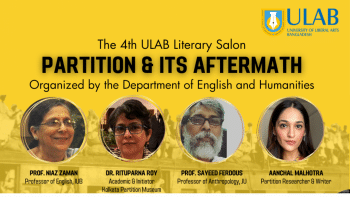
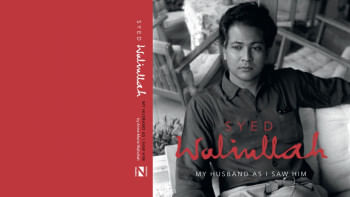



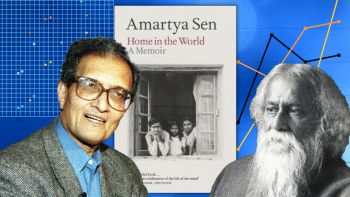





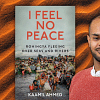



Comments